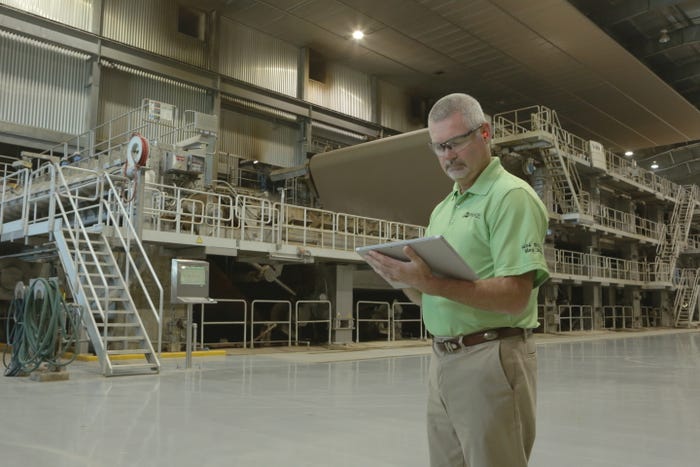Both the mill and packaging company send waste to the Covanta plant where it is burned, which produces steam and electricity.
Two upstate N.Y.-based firms, Greenpac Mill, which operates a linerboard mill, and Diamond Packaging, a carton and packaging manufacturer, have teamed with Covanta’s Niagara Falls, N.Y., waste-to-energy facility (WTE) to help reduce the carbon footprints of the respective firms’ operations.
The two companies work together with Diamond Packaging buying Greenpac Mill’s recycled linerboard to make corrugated boxes. And through a joint relationship with Morristown, N.J.-based Covanta, the two firms are moving toward closing the loop along the value chain.
Both the mill and packaging company send waste to the Covanta plant where it is burned, which produces steam and electricity. Greenpac taps into the steam generated at the plant for power.
“The waste we send to Covanta is the last three or four percent of what we generate that we couldn’t find a home for,” says Eric Longnecker, senior buyer, Diamond Packaging Green Team.
The company had announced it reached zero manufacturing waste to landfill in 2014.
“But another part of what we like is that the steam coming from this last few percent that we could not recycle is used to make energy to power the Greenpac Mill [that we buy] materials from,” Longnecker says. “So it’s a nice, closed loop system of processing waste and turning it into a new raw material for our use as well as for generating clean energy.”
Diamond Packaging and Greenpac’s nonrecyclable waste is mixed with post-recycled municipal solid waste (MSW) and combusted to make high-temperature steam. The steam is piped back to Greenpac Mill, via a 24-in.-wide, 4,400-ft.-long, high-pressure steam line dedicated exclusively to its operation. The steam is used to dry the paper the company produces.
Located in Rochester, 90 miles from the Covanta plant, Diamond Packaging is not close enough to the pipeline to directly tap into the energy produced from its trash. But the relationship was key to it also reaching zero waste. Covanta helps to supply energy to Greenpac and other Niagara Falls companies that use the steam produced at the plant.
Diamond Packaging has a compactor on site and when it’s filled it’s picked up and delivered to Covanta. Either Longnecker or the environmental safety director signs when the waste is picked up.
“So we are able to trace it,” he says. “There’s no transfer station and no point in time where it could be commingled. We know it will make it to Covanta and be burned for energy. We … can guarantee and show [our customers] that we are doing what we say.”
In 2016 the company sent 148 tons of waste to Covanta to be burned to produce energy, while recycling more than 98 percent of the material it generated. Greenpac Mill has been using the steam produced by Covanta since 2013 as part of its efforts to be more sustainable.
“We continue to look for ways to be creative about [our waste reduction efforts] and to get better,” Greenpac Mill general manager Murray Hewitt said in a statement. “Today we’re only sending 11 percent of our waste to the landfill, and that is mostly sludge. I know that Covanta can help us find a solution and get us to zero waste to landfill in the next couple of years.”

Greenpac Mill general manager Murray Hewitt
Covanta’s Niagara plant services six commercial customers, including Goodyear, Norampac, a paper mill under the Greenpac Corp. and Niacet, a manufacturer servicing the food and pharmaceutical industries.
“Neighboring companies are interwoven in each other’s value chain and passing their work that’s in process on the pipe ridges,” says Brian Kent, Covanta Niagara’s facility manager. “This enables them to be more efficient operationally and environmentally.”
The facility uses up to 2,250 tons of waste per day to generate steam for industrial customers and electricity placed on the grid, utilized in Western New York. The plant provides four billion pounds of steam per year to its six industrial customers, eliminating the need for on-site boilers.
Post separated ash resulting from the combustion process is used as daily cover at two local landfills.
About the Author(s)
You May Also Like




